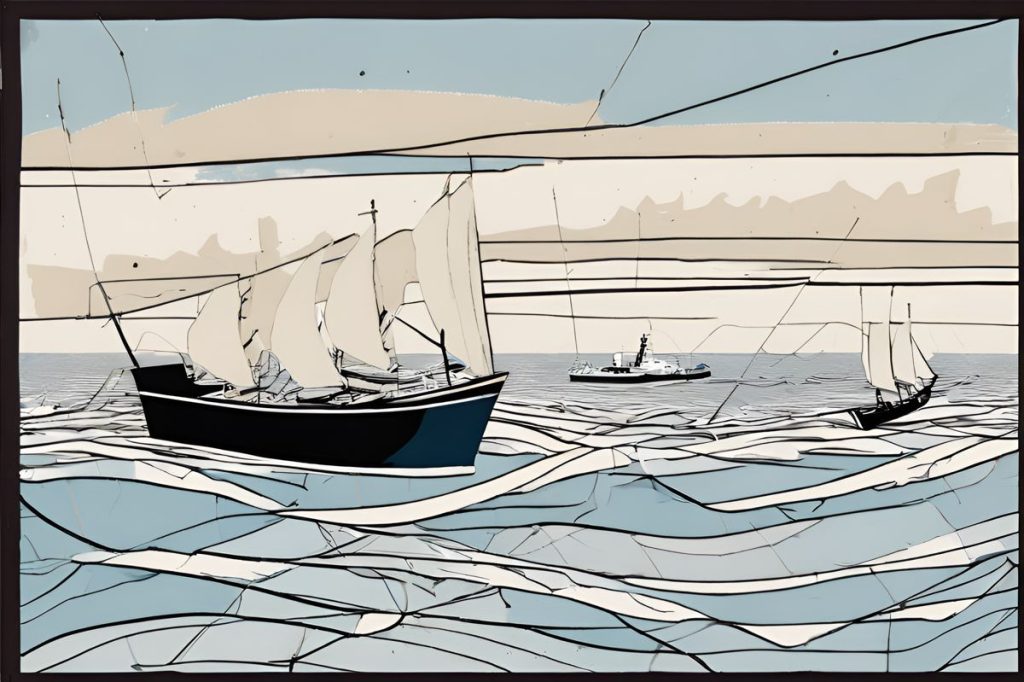The European Union, United Arab Emirates, and United States are collaborating to establish a maritime aid corridor between Cyprus and Gaza to combat the risk of famine for Gaza’s 2.3 million residents. Infrastructure developments, ceasefire negotiations, and limited airdrop supplies are part of the ongoing efforts to alleviate the humanitarian crisis in the region.
What are the humanitarian efforts to address the Gaza crisis?
The European Union, alongside the United Emirates and the United States, is establishing a maritime aid corridor between Cyprus and Gaza to deliver urgent aid. The initiative aims to combat the risk of famine for Gaza’s 2.3 million residents. Concurrently, infrastructure developments and international diplomacy efforts, including ceasefire negotiations and limited airdrop supplies, are underway to alleviate the humanitarian crisis.
The European Union has taken significant steps to mitigate the humanitarian crisis in Gaza, with the European Commission’s head announcing that a maritime aid corridor between Cyprus and Gaza could commence as early as this weekend. This development is part of a broader response by Western nations to address the dire situation in the Palestinian enclave, which has been devastated by ongoing conflict.
The proposed maritime route would expedite the delivery of much-needed aid to Gaza’s 2.3 million residents, who are currently at risk of famine according to U.N. warnings. The corridor is a joint effort between the European Union, the United Arab Emirates, and the United States, showcasing a unified international response to the urgent humanitarian needs.
Infrastructure Challenges and Ceasefire Stalemates
Despite these collaborative efforts, there are challenges ahead. For instance, U.S. President Joe Biden has announced the construction of a “temporary pier” on Gaza’s Mediterranean coast to facilitate aid delivery. However, building such infrastructure is expected to take weeks, and the suitability of Gaza’s coastline for larger ships presents additional logistical hurdles requiring potential dredging.
In the political realm, ceasefire negotiations continue to stagnate in Cairo. With the Muslim holy month of Ramadan looming, there is a pressing need to reach an agreement that could alleviate tensions and facilitate the flow of aid. The EU Commission President, Ursula von der Leyen, emphasizes the immediacy of the situation and the hope that the maritime corridor will be operational by the weekend, with initial pilot efforts already underway.
The Human Cost and Calls for Direct Action
The toll on human lives in Gaza has been severe, with reports of child fatalities due to malnutrition in northern Gaza’s hospitals. The complexity of the situation extends to the delivery of aid, with discussions of new air and sea routes to Gaza drawing criticism. Some argue that these efforts are a distraction from the more efficient use of existing land routes that are currently restricted.
The voices of Gazan residents like Hassan Maslah, displaced from Khan Younis and now in Rafah, call for more direct actions to stop the violence rather than promises of infrastructure and aid. The sentiment reflects a deep frustration with the continuation of the conflict and the impact of foreign military support to Israel.
The Role of International Diplomacy
The United States, alongside other countries, has been airdropping supplies into Gaza, albeit in limited quantities. Despite these efforts, tragic incidents have occurred, such as the unintended casualties caused by falling aid boxes. The U.S. Secretary of State Antony Blinken has reiterated the existence of an Israeli-approved ceasefire proposal, placing the onus on Hamas to accept it.
As the situation evolves, the international community remains focused on finding solutions to bring an end to the hostilities and address the humanitarian crisis. The proposed maritime aid corridor stands as a symbol of these efforts, and the world watches in hope for its swift implementation.
What are the humanitarian efforts to address the Gaza crisis?
The European Union, alongside the United Emirates and the United States, is establishing a maritime aid corridor between Cyprus and Gaza to deliver urgent aid. The initiative aims to combat the risk of famine for Gaza’s 2.3 million residents. Concurrently, infrastructure developments and international diplomacy efforts, including ceasefire negotiations and limited airdrop supplies, are underway to alleviate the humanitarian crisis.
What challenges are being faced in terms of infrastructure and ceasefire negotiations?
There are challenges ahead in establishing infrastructure to facilitate aid delivery in Gaza, such as the construction of a “temporary pier” on Gaza’s Mediterranean coast by the U.S. Building such infrastructure is expected to take weeks, and logistical hurdles like the suitability of Gaza’s coastline for larger ships may require potential dredging. Ceasefire negotiations in Cairo continue to stagnate, highlighting the urgency to reach an agreement to ease tensions and enable the flow of aid.
What is the human cost of the Gaza crisis and what calls for action have been made?
The toll on human lives in Gaza has been severe, with reports of child fatalities due to malnutrition in northern Gaza’s hospitals. While aid delivery discussions involve new air and sea routes, some critics argue that existing land routes, though restricted, could be more efficient. Gazan residents like Hassan Maslah are calling for more direct actions to end the violence, expressing frustration with promises of infrastructure and aid amid ongoing conflict.
What role does international diplomacy play in addressing the Gaza crisis?
International efforts, including airdropping limited supplies into Gaza, have been made by countries like the United States. Tragic incidents, such as unintended casualties from falling aid boxes, have occurred. The U.S. Secretary of State Antony Blinken has emphasized the need for Hamas to accept an Israeli-approved ceasefire proposal. The international community remains focused on finding solutions to end hostilities and address the humanitarian crisis, with the proposed maritime aid corridor symbolizing these efforts.

